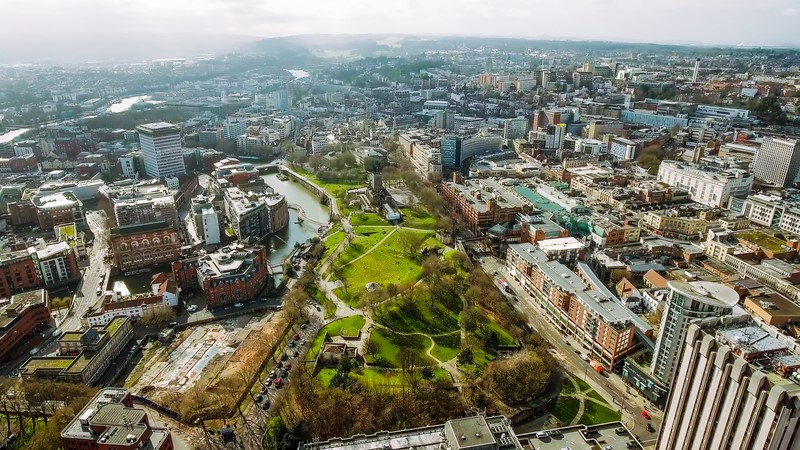Bristol needs be bold in its vision and create denser centres, including taller buildings in the right places, to help meet its future needs, says Bristol studio of international architects BDP
Yuli Cadney-Toh, an architect director at multi-disciplinary firm BDP’s Bristol studio, who recently returned to the city after 30 years working around the world, says the city’s skyline had barely changed in the last four decades. She says that we are at risk of being distracted by the debate around Bristol’s skyline and missing the more important civic brief.
“As a city, we need to define with clarity and vision the positive contribution we want these developments to make to their surrounding streets, city quarter, the environment and beyond – with that vision, the built environment will follow. The true value to a city of tall buildings, or indeed any buildings, is not in ‘how high’ but in how we want them to contribute to the public realm, businesses, employment, sustainability and quality of life on the ground”, says Yuli.
In March, Bristol City Council set out its intention to build 13,500 new homes in central Bristol by 2036 as part of the region’s consultation on its joint spatial plan, which outlines its plans to meet its housing needs for the next 20 years. The city council has identified areas across the city that would suit densification, including an extended Bristol Temple Quarter Enterprise Zone around a redeveloped Temple Meads Station as a modern transport interchange and gateway.
Yuli says: “This is a city with huge potential and there is no reason why it cannot meet the needs of its communities. We believe taller buildings of high design quality are an important ingredient in the creation of sustainable cities that work for the people who live in them.”
Yuli has worked on high-profile projects around the world including in Sydney, which she considers a model for sustainable high-rise development. This includes her work on the globally-renowned Barangaroo development project, a mixed-use, high-density scheme built on brownfield land.
Constrained by its boundaries and with limited availability of city centre sites, Bristol could discover a new dimension for growth with a vision that integrates tall building, says BDP. “Tall buildings are a viable alternative to building beyond the city limits into green belt land and can save and invigorate our vibrant Bristol character. Going up or outwards is our choice.”
Denser developments can meet higher environmental standards than can be achieved by low-density schemes, as there are more opportunities to deliver green features efficiently, for example, a centralised combined heat and power plant. An urban regeneration scheme of mixed height buildings will offer more homes and workplaces, and free up space for public parks, schools and street-based activities. Tall buildings also create a new ecosystem at ground level where businesses can thrive thanks to the large footfall of people in the immediate area, says BDP. Proximity to public transport hubs and routes is a key advantage. “Reducing the need for car commutes will take the stress off ourselves and our roads, promote walkability and cyclability, and improve our air quality”, says Yuli.
She adds: “Tall buildings can help increase the availability of homes and business spaces, contribute to a more sustainable environment, offer choice and create places where people want to live.”

















